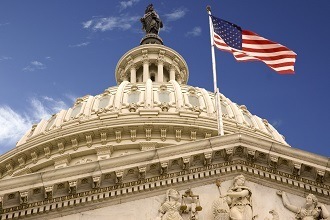
The nation now has a roadmap for reopening.
President Donald Trump has unveiled Guidelines for Opening Up America Again, a three-phased approach based on the advice of public health experts. These steps are intended to help state and local officials when reopening their economies, getting people back to work and continuing to protect American lives.
The plan calls for state and local governments to implement a three-phase return to normalcy. Governments will begin by monitoring three COVID-19-related data points.
If the numbers show a decline for two consecutive weeks, government officials may move into Phase One. If numbers continue to decline another two weeks, they can move to Phase Two, and the same for Phase Three. By the end of Phase Three, normal life should resume, though with some added precautions.
Phase One
Individuals
- ALL VULNERABLE INDIVIDUALS should continue to shelter in place. Members of households with vulnerable residents should be aware that by returning to work or other environments where distancing is not practical, they could carry the virus back home. Precautions should be taken to isolate from vulnerable residents.
- All individuals, WHEN IN PUBLIC (e.g., parks, outdoor recreation areas, shopping areas), should maximize physical distance from others. Social settings of more than 10 people, where appropriate distancing may not be practical, should be avoided unless precautionary measures are observed.
- Avoid SOCIALIZING in groups of more than 10 people in circumstances that do not readily allow for appropriate physical distancing (e.g., receptions, trade shows)
- MINIMIZE NON-ESSENTIAL TRAVEL and adhere to CDC guidelines regarding isolation following travel.
Employers
- Continue to ENCOURAGE TELEWORK, whenever possible and feasible with business operations.
- If possible, RETURN TO WORK IN PHASES.
- Close COMMON AREAS where personnel are likely to congregate and interact, or enforce strict social distancing protocols.
- Minimize NON-ESSENTIAL TRAVEL and adhere to CDC guidelines regarding isolation following travel.
- Strongly consider SPECIAL ACCOMMODATIONS for personnel who are members of a VULNERABLE POPULATION.
Phase Two
Individuals
- ALL VULNERABLE INDIVIDUALS should continue to shelter in place. Members of households with vulnerable residents should be aware that by returning to work or other environments where distancing is not practical, they could carry the virus back home. Precautions should be taken to isolate from vulnerable residents.
- All individuals, WHEN IN PUBLIC (e.g., parks, outdoor recreation areas, shopping areas), should maximize physical distance from others. Social settings of more than 50 people, where appropriate distancing may not be practical, should be avoided unless precautionary measures are observed.
- NON-ESSENTIAL TRAVEL can resume.
Employers
- Continue to ENCOURAGE TELEWORK, whenever possible and feasible with business operations.
- Close COMMON AREAS where personnel are likely to congregate and interact, or enforce moderate social distancing protocols.
- Strongly consider SPECIAL ACCOMMODATIONS for personnel who are members of a VULNERABLE POPULATION.
Phase Three
Individuals
- VULNERABLE INDIVIDUALS can resume public interactions, but should practice physical distancing, minimizing exposure to social settings where distancing may not be practical, unless precautionary measures are observed.
- LOW-RISK POPULATIONS should consider minimizing time spent in crowded environments.
Employers
- Resume UNRESTRICTED STAFFING of worksites.





